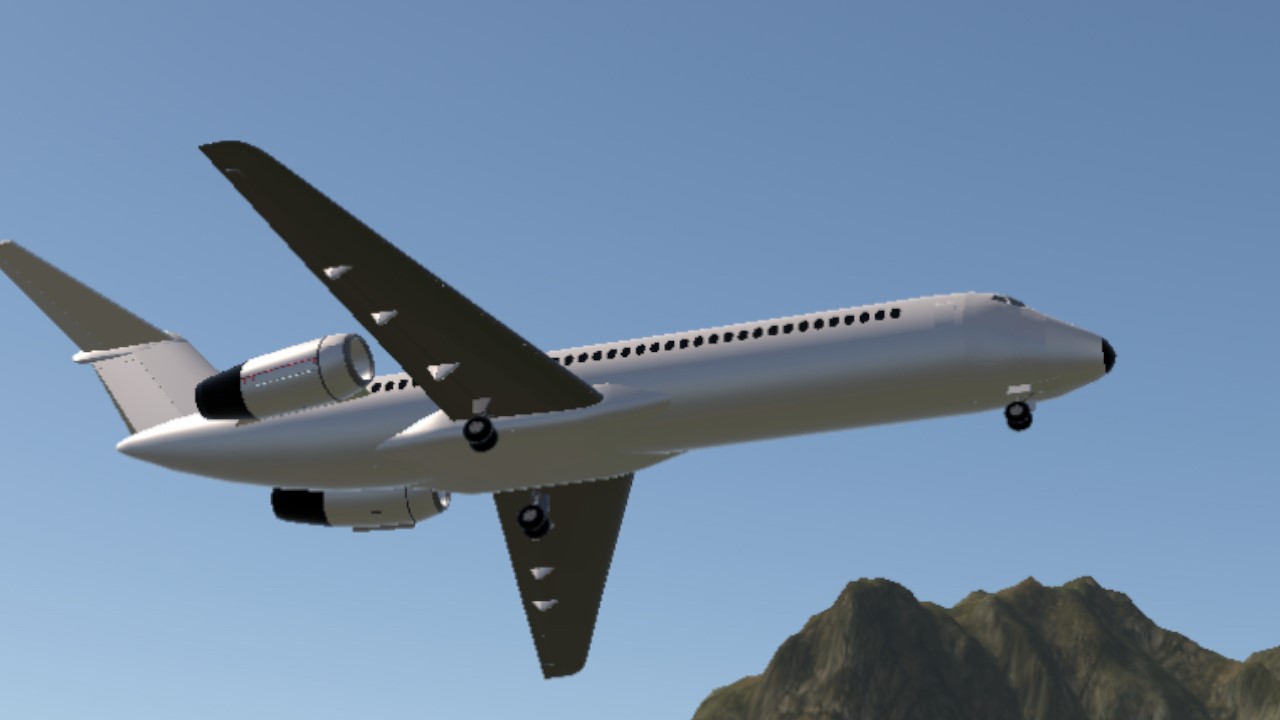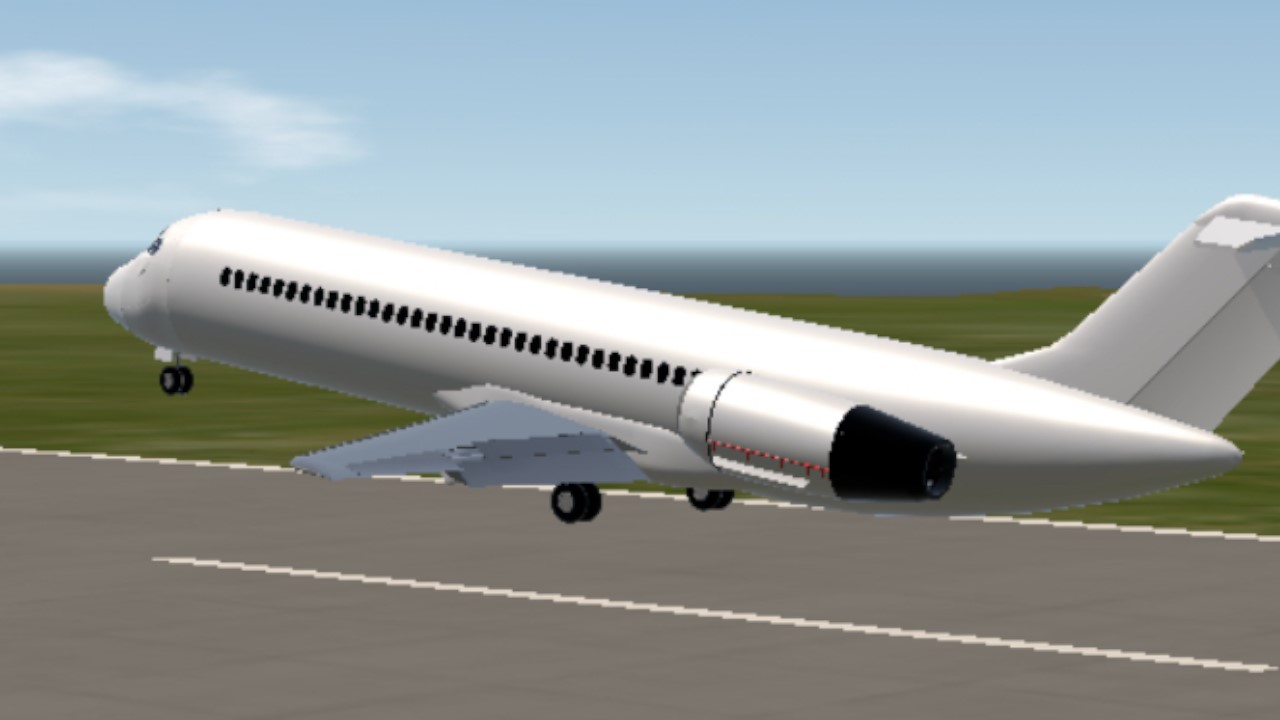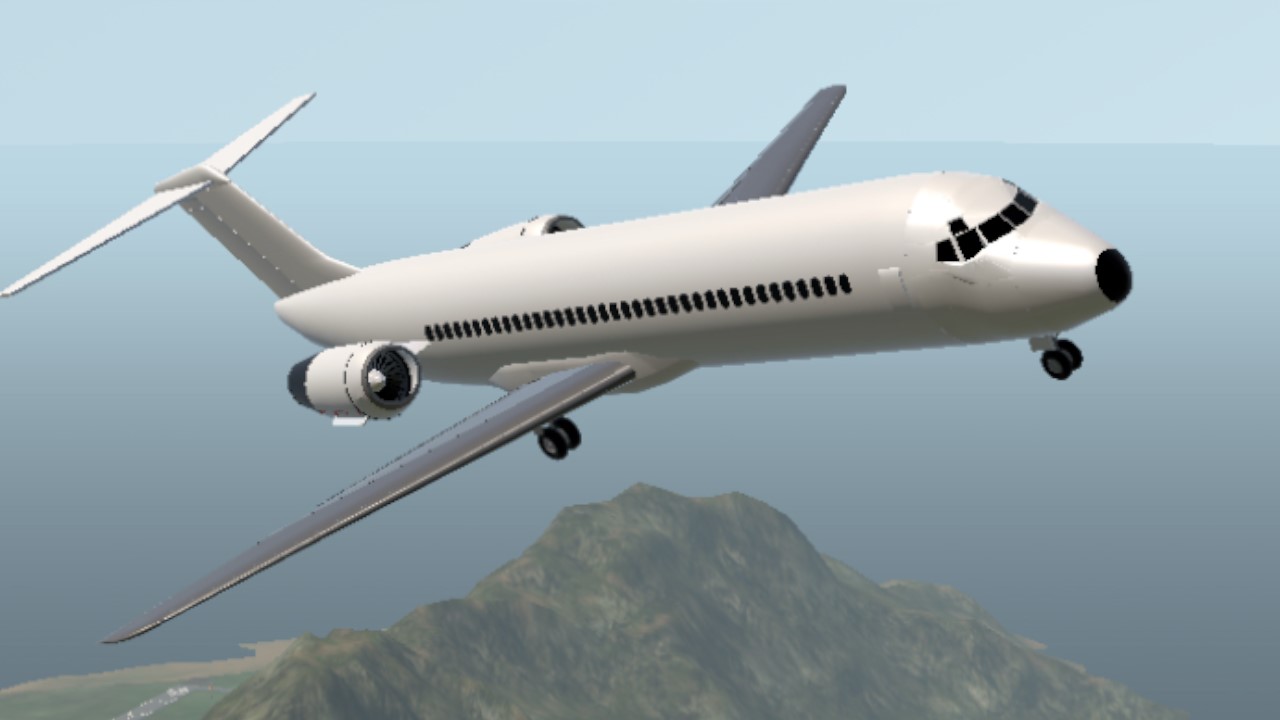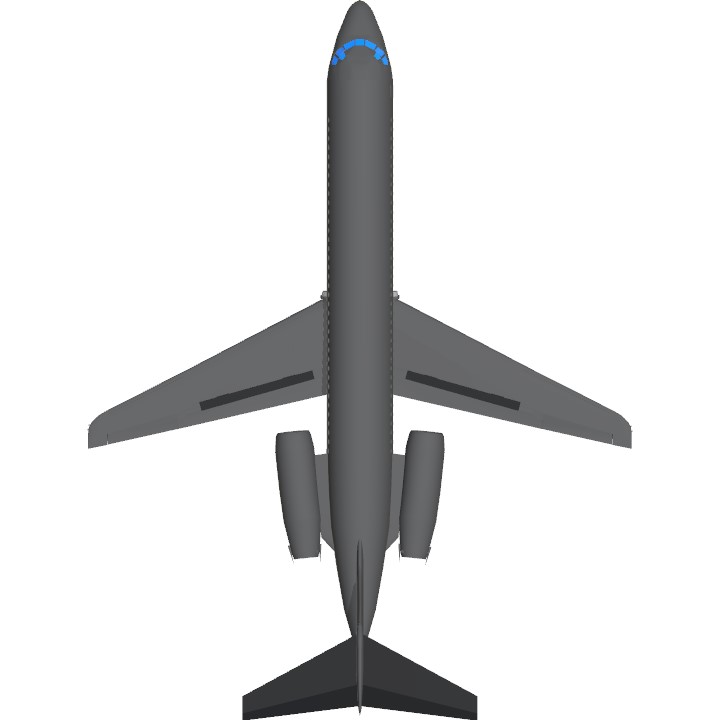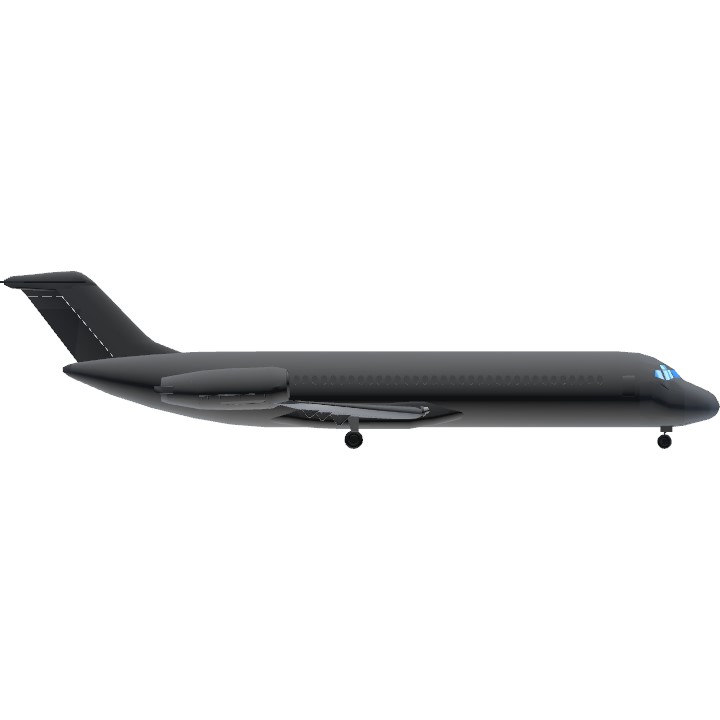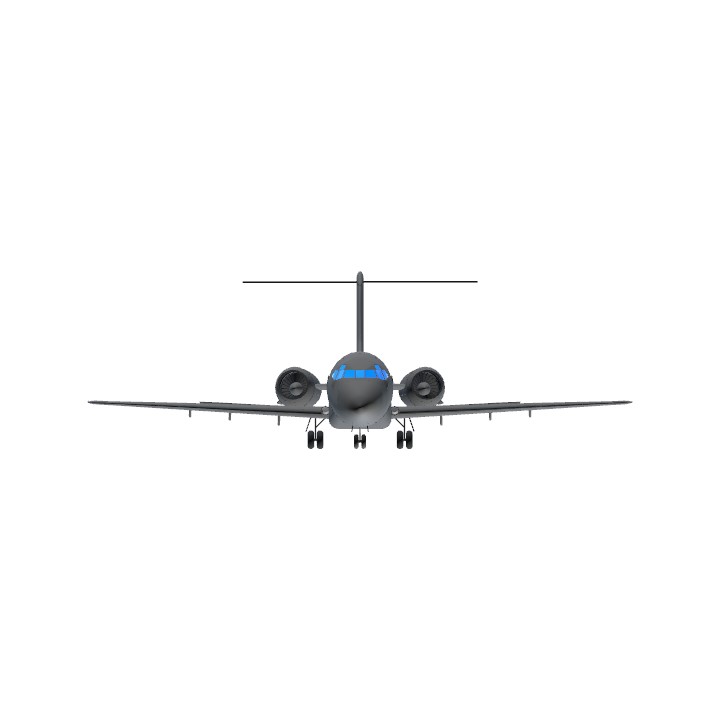Autocredit isn’t working… AGAIN!?
Credit to: AnIndonesianGuy for the DC-9 and LM0418 for the engines
Ah, yes, the Douglas DC-9, an iconic aircraft from McDonnell Douglas, just… some big changes.
New features:
- New Engines
- New spoilers
- New horizontal stabilizer
- Cockpit Window Now Dark
- Passenger Windows now Dark
- Fixed Landing Gear
Instructions: (Can be viewed in-game)
VTOL: Flaps
Trim: Trim
AG3: Reverse Thrust
AG5: Landing Lights
AG8: Nav Lights
NOTE: This is a heavy plane, which means it will be more difficult to take off and maintain straight flight
I hope you enjoy!
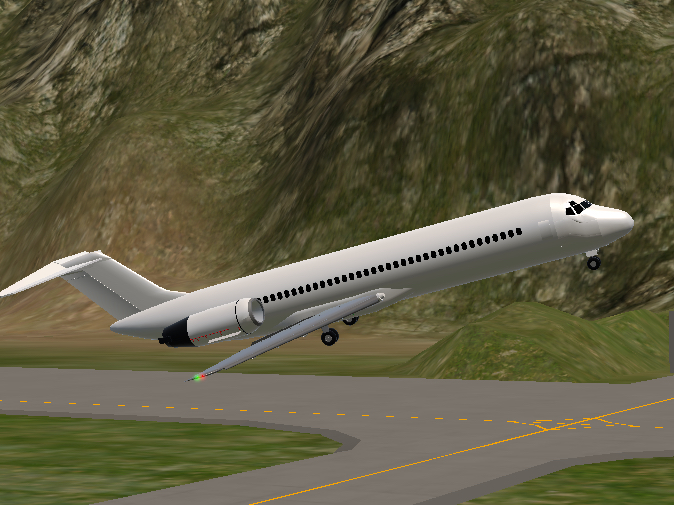
Important Information (Wikipedia)
The McDonnell Douglas DC-9 is an American five-abreast, single-aisle aircraft designed by the Douglas Aircraft Company. It was initially produced as the Douglas DC-9 prior to August 1967, after which point the company had merged with McDonnell Aircraft to become McDonnell Douglas. Following the introduction of its first jetliner, the high-capacity DC-8, in 1959, Douglas was interested in producing an aircraft suited to smaller routes. As early as 1958, design studies were conducted; approval for the DC-9, a smaller all-new jetliner, came on April 8, 1963. The DC-9-10 first flew on February 25, 1965, and gained its type certificate on November 23, to enter service with Delta Air Lines on December 8.

The DC-9 is powered by two rear-mounted Pratt & Whitney JT8D low-bypass turbofan engines under a T-tail for a cleaner wing aerodynamic. It has a two-person flight deck and built-in airstairs to better suit smaller airports. The Series 10 aircraft are 104 ft (32 m) long for typically 90 coach seats. The Series 30, stretched by 15 ft (4.5 m) to seat 115 in economy, has a larger wing and more powerful engines for a higher maximum takeoff weight (MTOW); it first flew in August 1966 and entered service in February 1967. The Series 20 has the Series 10 fuselage, more powerful engines, and the Series 30's improved wings; it first flew in September 1968 and entered service in January 1969. The Series 40 was further lengthened by 6 ft (2 m) for 125 passengers, and the final DC-9-50 series first flew in 1974, stretched again by 8 ft (2.5 m) for 135 passengers. When deliveries ended in October 1982, 976 had been built. Smaller variants competed with the BAC One-Eleven, Fokker F28, and Sud Aviation Caravelle, and larger ones with the original Boeing 737
Specifications
General Characteristics
- Created On iOS
- Wingspan 91.2ft (27.8m)
- Length 120.4ft (36.7m)
- Height 29.7ft (9.1m)
- Empty Weight N/A
- Loaded Weight 64,473lbs (29,244kg)
Performance
- Power/Weight Ratio 1.704
- Wing Loading 33.9lbs/ft2 (165.3kg/m2)
- Wing Area 1,903.9ft2 (176.9m2)
- Drag Points 8722
Parts
- Number of Parts 515
- Control Surfaces 7
- Performance Cost 2,292

